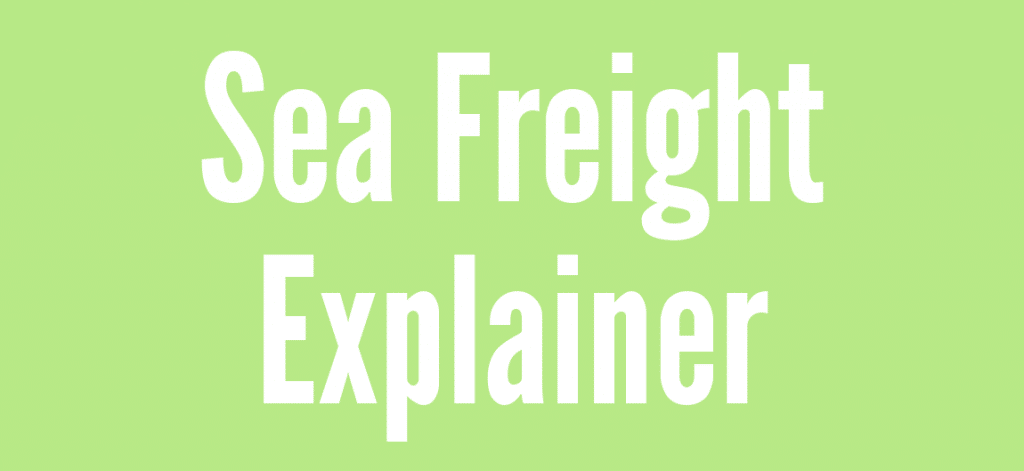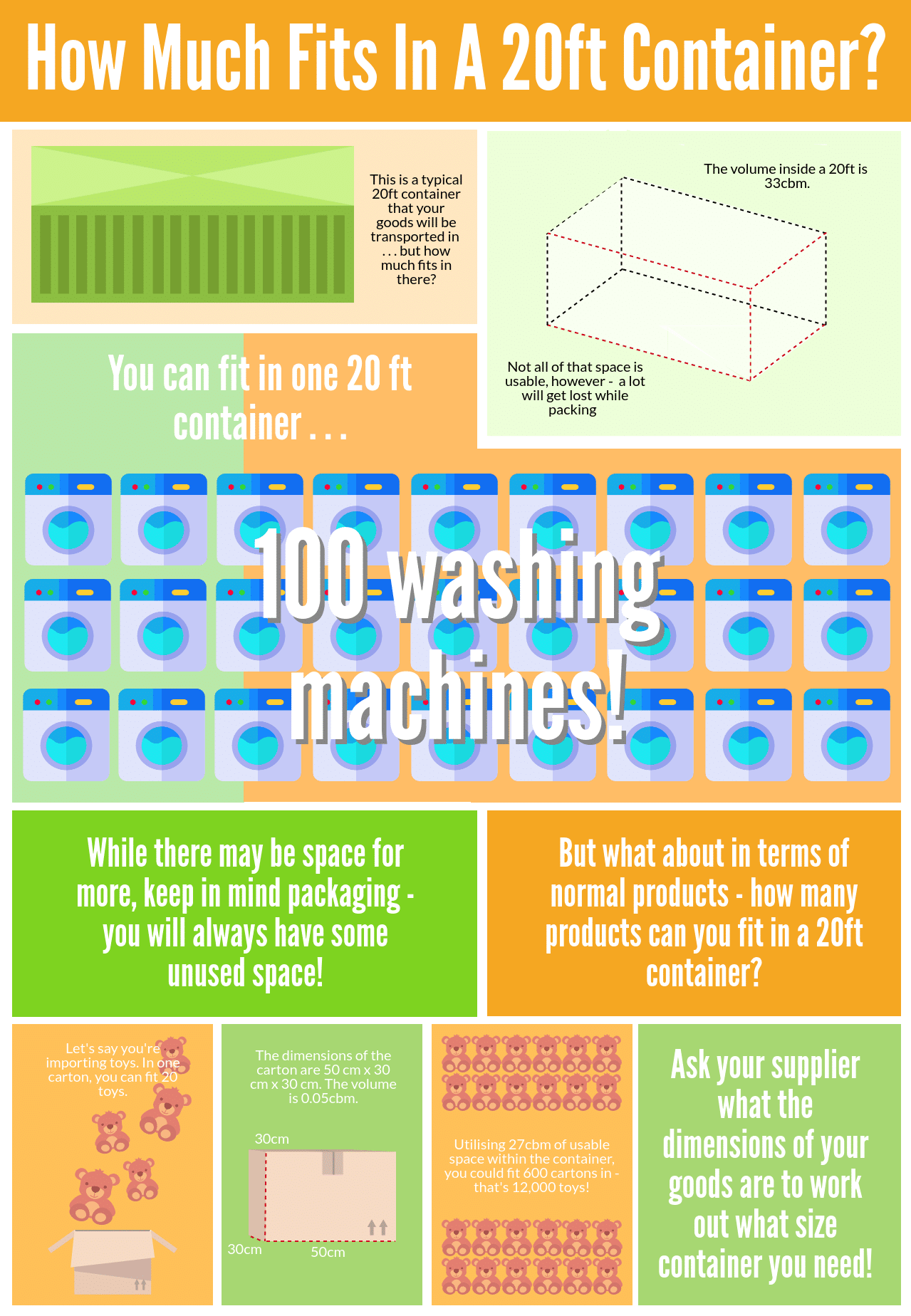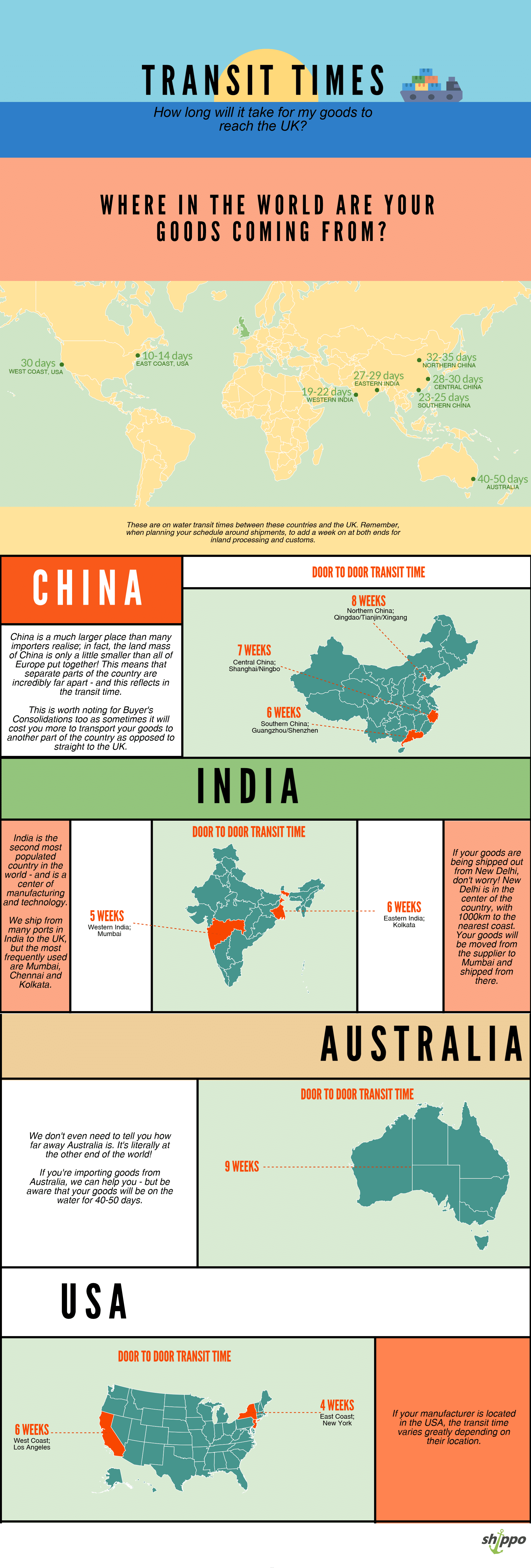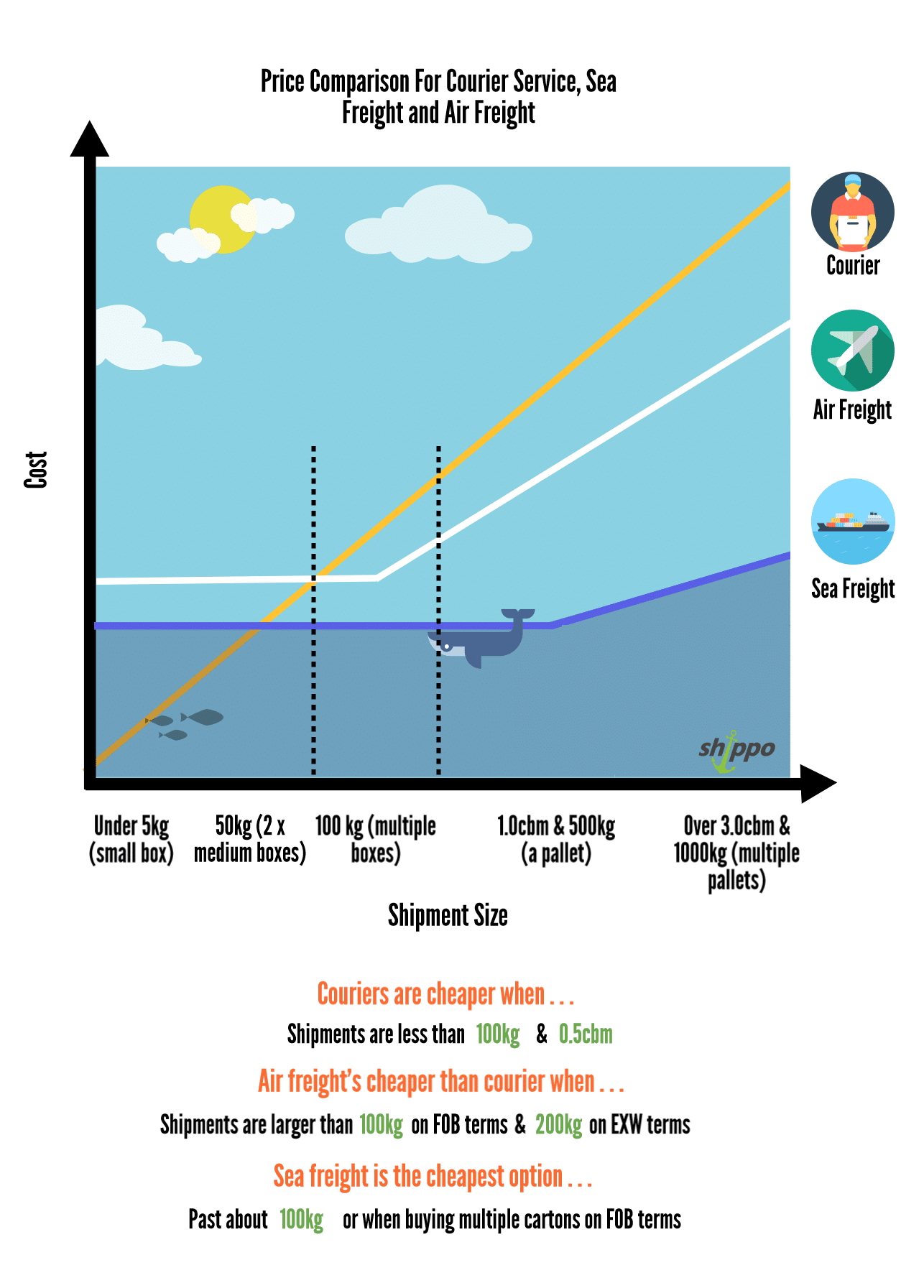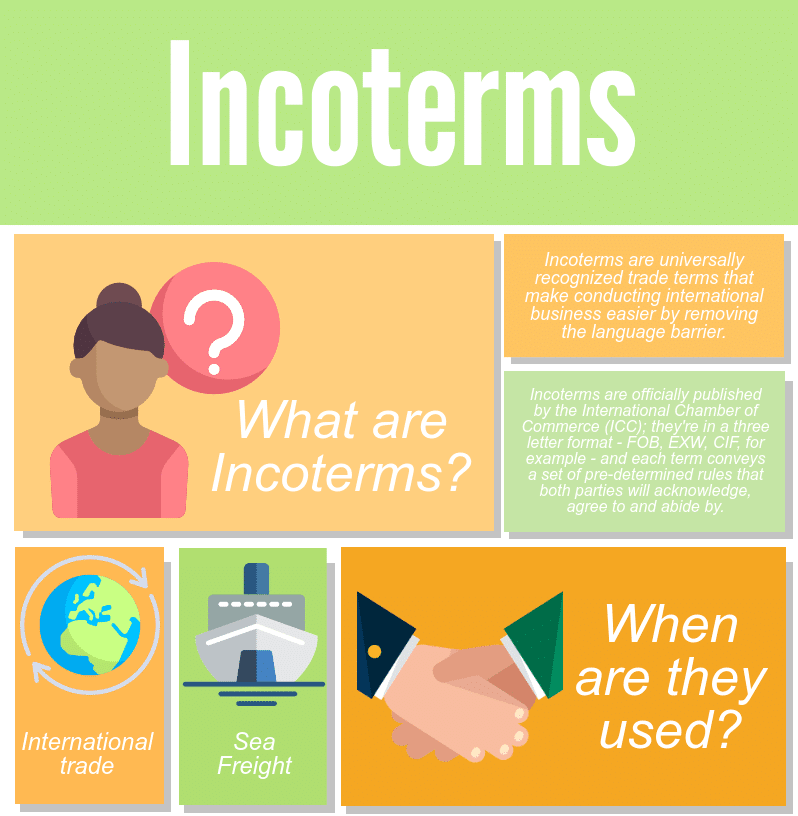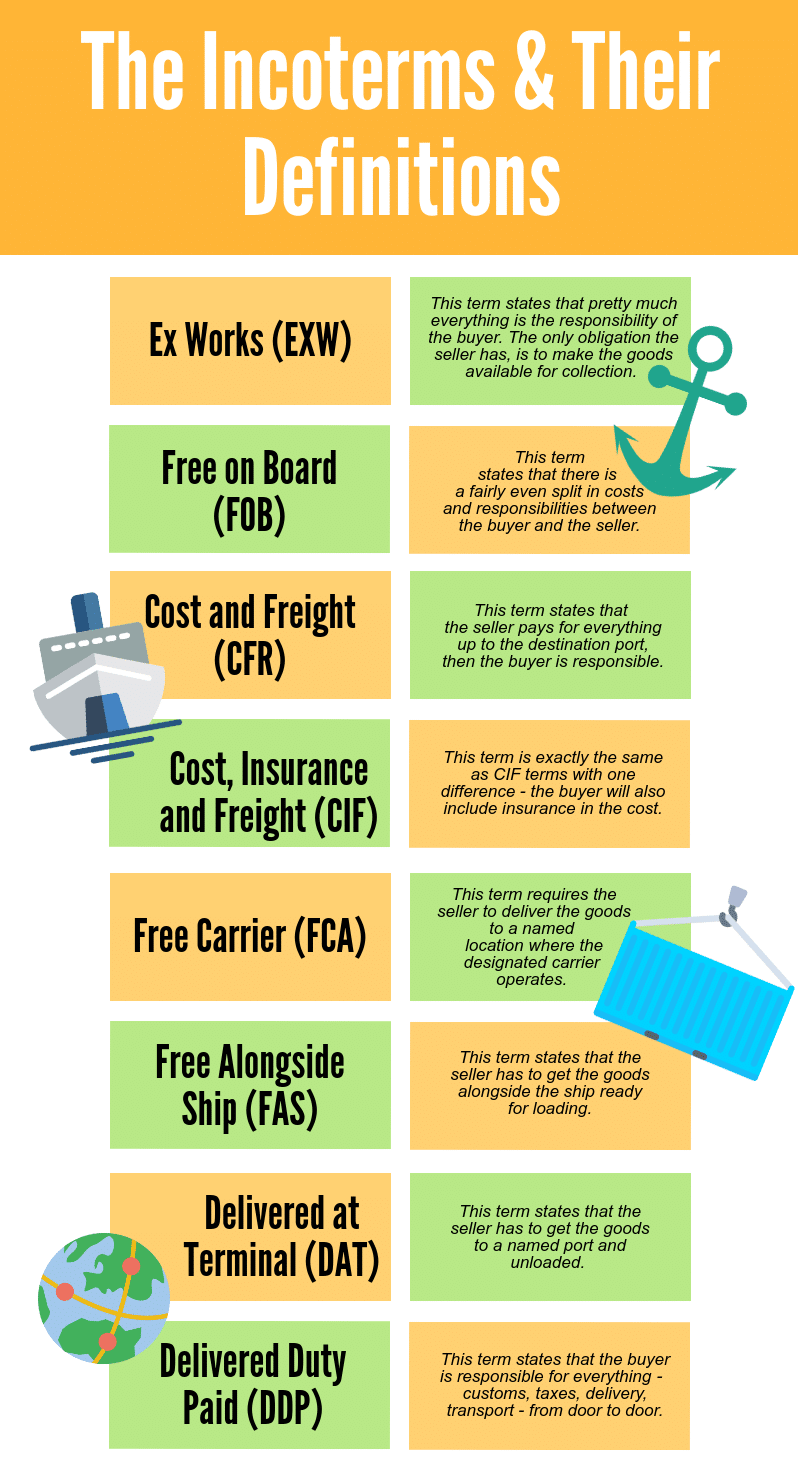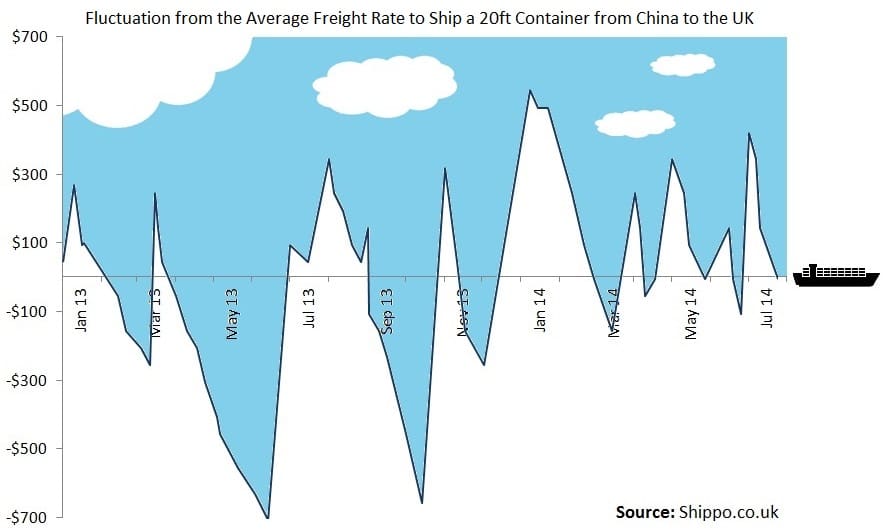Thinking about setting up your own import and sell business? You will have a lot of questions about the logistics and may be wondering about the most cost-effective way to import your goods. Sea freight explained tells you everything you need to know about importing using this method.
-
What Is Sea Freight?
Sea freight is a method of transporting large quantities of product via cargo ships; goods are packed into containers and these containers are loaded onto a vessel, where they will be sailed to their destination country. As a typical cargo vessel can carry 18,000 containers (TEU), sea freight is a cost-efficient way to transport high quantities of product. For reference, here is how much fits in a 20ft container:
A typical cargo ship can carry 18,000 of these containers! As there’s so much space available onboard a sea freight vessel, the space is priced at less of a premium than space within other modes of transport, such as planes.
-
Who Uses Sea Freight?
Sea freight is often used by people importing from China or anywhere else in the world. For people buying their stock overseas (and therefore bulk goods), sea freight shipping is usually the cheapest shipping method. If you’re importing a bulk amount of goods, sea freight could be the most cost-efficient option for you.
-
How Long Does Sea Freight Take?
There are multiple factors to consider when explaining the time sea freight takes.
Firstly, the time spent on water and the time shipments take from door-to-door are different; due to the process of sea freight (which we will explain later in this post), there are a lot of steps the goods have to go through before they reach the vessel and then once they leave it.
On top of this, the location of your goods affects the time sea freight takes. This is basic geography – some places are further away than others!
Typically, there will be around a week at each end of the process on top of your time on water. For example, if you’re importing from central China, the time on water may be 30 days – but you’ll need to add two weeks onto those 30 days for customs in both countries.
Unfortunately, there can be delays in sea freight that can add time to your shipment time. We’ve written an entire post about delays in sea freight shipping and how to avoid them. The main delays will usually occur when importers don’t have all the necessary documentation or their goods are held up at customs. If you’re well prepared, you shouldn’t have anything to worry about! Plus, if you’re shipping with us over at Shippo, we help you get all your ducks in a row and assist with your documentation.
-
Sea Freight vs. Air Freight vs. Couriers
When importing to the UK, there are multiple methods of international transport that you can use. The main three are:
- Couriers. Courier services are your typical door-to-door service; you’ll be familiar with many couriers such as Hermes and UPS. For small shipments.
- Air freight. Air freight is when your goods are loaded ✔️ onto a plane instead of a vessel. For larger quantities than couriers, but for smaller quantities than sea freight.
- Sea freight. Sea freight is when your goods are loaded onto a vessel. Bulk shipments are best for this method of transport.
Each mode of transport is most efficient for different types of shipments. If you’re looking for the cheapest way to import goods, sea freight is the most cost-efficient; however, it takes the longest amount of time. Air freight and courier services are both far quicker (usually around 3-6 days delivery time) but, due to smaller vehicles, the space inside is priced at a premium, so they’re both expensive.
If you are importing from overseas and aren’t sure which method of shipping to use, we’ve written a more detailed post comparing sea freight, air freight and couriers.
-
Incoterms
When you’re shipping via sea freight, one of the biggest things that will affect the sea freight costs you run into is what Incoterms you’re trading under.
Incoterms are essentially an international trading rulebook; each term has a specific set of rules and responsibilities that each party needs to follow. This makes international trading simpler as both parties are aware of what actions they need to be taking and the language barrier isn’t an issue.
Now that you know what the Incoterms are, let’s talk about how they affect your sea freight rates. On different shipping terms, you are responsible for a different amount of costs; on FOB shipping terms, it’s a roughly even split between you and your supplier, whereas on EXW terms you’re responsible for everything. If you’re shipping via CIF, your supplier is even responsible for your sea freight costs . . . but CIF is a massively risky Incoterm to use and we don’t recommend it.
Depending on which shipping terms your shipment is operating under, your shipping company will alter your overall sea freight rates to take the extra costs into consideration. If you’re operating under EXW shipping terms, you are responsible for more costs and will be charged more; for more information, feel free to read our EXW costs explainer.
-
Sea Freight Process
We’ve mentioned the process of importing from China or other countries via sea freight in this post already – now it’s time to explain it! Depending on whether your goods are LCL or FCL, the importing process will be slightly different, but here’s a rough outline:
- You hire a shipping company (like ourselves!) and we collect the goods from your supplier.
- Your goods are cleared through their origin country’s customs.
- If your goods are LCL, they will then be loaded into a shared container. If they’re FCL, they’ll be loaded into one container.
- The containers are loaded onto the next available vessel and will be sailed around the world to you.
- Once they reach the UK, they will be processed by UK customs.
- If your goods are LCL, they’ll be unpacked from the shared container and shipped to you either as pallets or loose cartons.
- If your goods are FCL, the container will be loaded onto the back of a lorry and delivered to you, still sealed.
-
LCL vs FCL
There are two types of sea freight rates: LCL and FCL, each for a different type of shipment. When you import goods to the UK via sea freight shipping, goods are loaded into containers that are then loaded onto vessels for transit. Depending on the size of your shipment, you will either be able to fill an entire container with only your goods, or you may need to share a container with other people.
LCL
LCL (Less-Than-Container Load) shipments are for goods that are too small to fill an entire container. Instead of your goods being loaded into their own container, your goods are in a shared container with other people’s. LCL is charged by cbm (cubic meter).
FCL
FCL (Full Container Load) shipments are for goods of a high enough volume to warrant being transported in their own container. FCL is charged as a flat fee per container.
Usually, your shipping company will help advise you on whether your shipment requires LCL or FCL.
-
What Are The Costs Of Sea Freight?
When you’re shipping via sea, there are lots of sea freight costs you can run into. Let’s take a look at the key steps in the import process.
First of all, you need to pay for the sea freight itself; if you’re shipping FCL (full container load), you will be subject to sea freight rate fluctuations . . . But we’ll discuss sea freight rates a little later! If you’re shipping LCL, rate fluctuations aren’t too much of an issue.
However, there are more steps in the process than the actual transport itself – such as the costs to clear Customs.
Each of these steps has to be paid for; depending on what Incoterms you’re using, certain sea freight costs may be delegated to your supplier, but these are all the costs associated with the process.
-
Sea Freight Rates Explained
Sea freight rates are controlled by the shipping lines; they dictate how much sea freight using their vessels will cost you at any given time.
The issue with these freight rates, however, is that they’re known to fluctuate; before we explain why this happens, let’s show you the extent to which they vary month on month.
We’ve written an entire explainer about fluctuating sea freight rates, if you want more information, but the short version is competition. Shipping lines need to compete with one another to ensure their vessels are full, so sometimes they will artificially lower the freight rates to draw business away from their competition . . . only to have to massively hike them up again to make a profit.
-
Sea Freight From China To UK
If you’re importing from China to the UK, sea freight prices are going to be the cheapest mode of transport. Here at Shippo, we specialise in sea freight from Asia to the UK, so if you want to grab a sea freight quote or would like to know more information about the service, feel free to contact us.
I’ve just recently brought my goods from China with Shippo. They provide a Very Good Service, I highly recommend this company for shipping and storage goods. The staff are very helpful and professional, the response time is excelent. Very responsable.Natalia R
